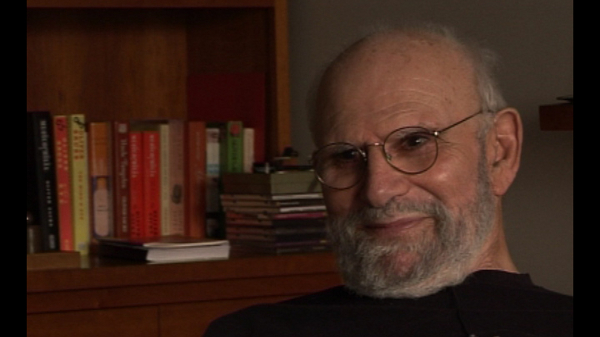NEXT STORY

Sleeping on fungus in the Central Valley
RELATED STORIES

NEXT STORY

Sleeping on fungus in the Central Valley
RELATED STORIES


|
Views | Duration | |
|---|---|---|---|
| 111. Jim Hamilton: My great friend | 384 | 01:13 | |
| 112. The beginning of my interest in neurology and case histories | 322 | 01:51 | |
| 113. Sleeping on fungus in the Central Valley | 289 | 01:30 | |
| 114. Working to fund my travelling around the USA | 287 | 00:31 | |
| 115. Work with Feinstein and Levin on Parkinson's disease | 292 | 01:24 | |
| 116. Announcing myself to the world of neurology | 299 | 02:26 | |
| 117. My first real interactions with patients | 303 | 02:19 | |
| 118. 'Arnold Friedman took a shine to me' | 288 | 00:36 | |
| 119. Arnold Friedman's strange turn | 411 | 02:41 | |
| 120. The final writing of Migraine | 385 | 06:00 |


I think I’d been interested in neurology, what is now called neuroscience – although the word didn’t exist then – probably since... since I was a teenager, but meeting patients in detail was very exciting to me with one patient who had jerky movements, synchronous with flashing lights. She... and actually a sister of hers told me this had been in the family for five generations. And I went to Ohio and I looked up church records and gravestones. And I... and I liked… this was one of the things which was included in my ill-fated myoclonus book.
At that time, however – already at that time – I think, the case history was supreme for me. And, although, I was not sure what form it should take, I remember back in '64 I saw a man with Creutzfeldt-Jakob disease, or Jakob-Creutzfeldt, with a terrible rapid dementia. This was long before the incidence of mad cow disease and juvenile CJ and I wrote two case histories about him, one, full of medical jargon and the other rather like a short story. And I somehow felt that the proper case history would come somewhere in between, that it should be full of authentic detail but that it should have all the drama and emotion of a short story or a novella.
Oliver Sacks (1933-2015) was born in England. Having obtained his medical degree at Oxford University, he moved to the USA. There he worked as a consultant neurologist at Beth Abraham Hospital where in 1966, he encountered a group of survivors of the global sleepy sickness of 1916-1927. Sacks treated these patients with the then-experimental drug L-Dopa producing astounding results which he described in his book Awakenings. Further cases of neurological disorders were described by Sacks with exceptional sympathy in another major book entitled The Man Who Mistook His Wife For A Hat which became an instant best seller on its publication in 1985. His other books drew on his rich experiences as a neurologist gleaned over almost five decades of professional practice. Sacks's work was recognized by prestigious institutions which awarded him numerous honours and prizes. These included the Lewis Thomas Prize given by Rockefeller University, which recognizes the scientist as poet. He was an honorary fellow of both the American Academy of Arts and Letters and the American Academy of Arts and Sciences, and held honorary degrees from many universities, including Oxford, the Karolinska Institute, Georgetown, Bard, Gallaudet, Tufts, and the Catholic University of Peru.
Title: The beginning of my interest in neurology and case histories
Listeners: Kate Edgar
Kate Edgar, previously Managing Editor at the Summit Books division of Simon and Schuster, began working with Oliver Sacks in 1983. She has served as editor and researcher on all of his books, and has been closely involved with various films and adaptations based on his work. As friend, assistant, and collaborator, she has accompanied Dr Sacks on many adventures around the world, clinical and otherwise.
Tags: neurology, neuroscience, myoclonus, Creutzfeldt-Jakob disease, mad cow disease, dementia, case history
Duration: 1 minute, 51 seconds
Date story recorded: September 2011
Date story went live: 02 October 2012